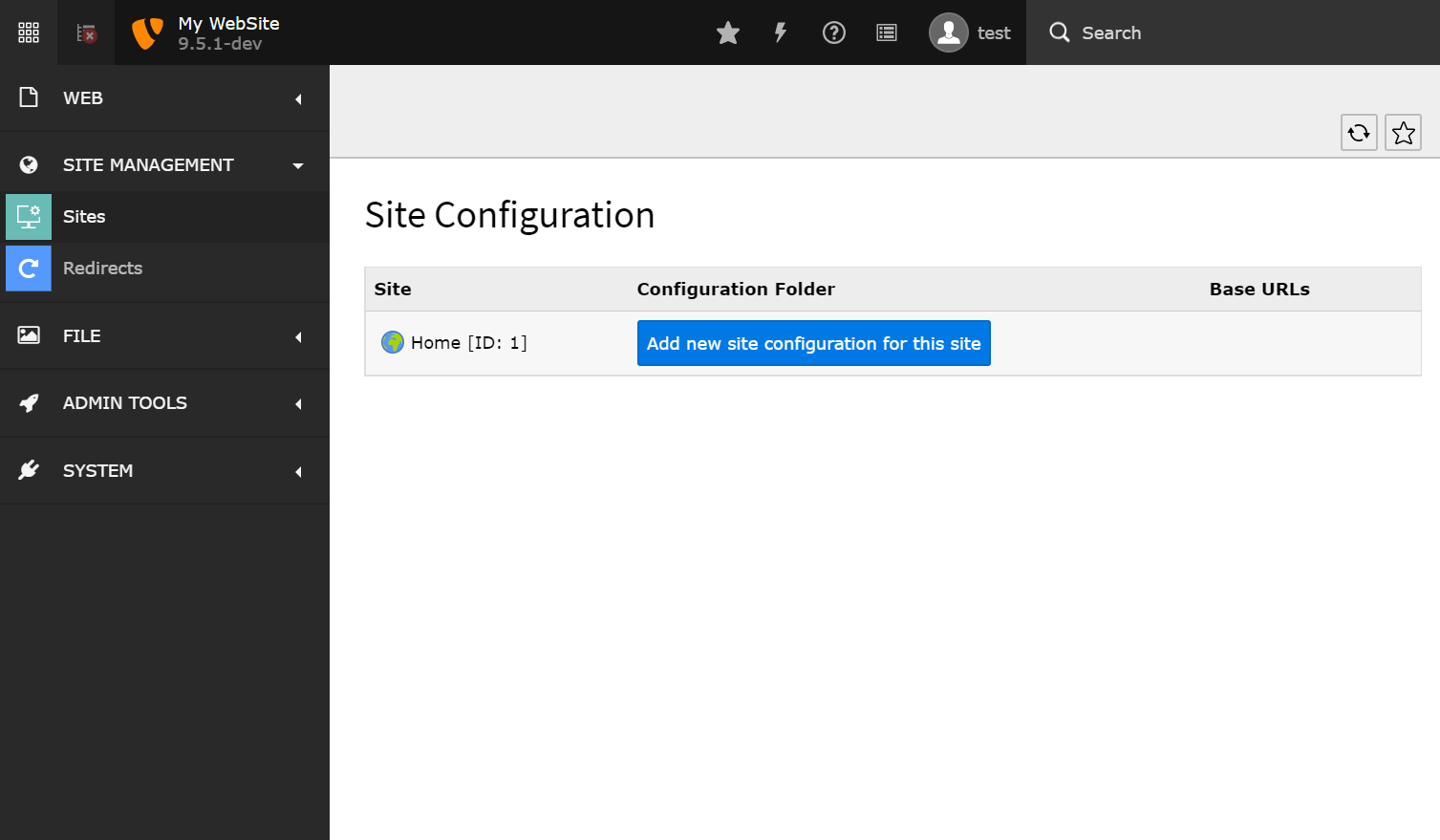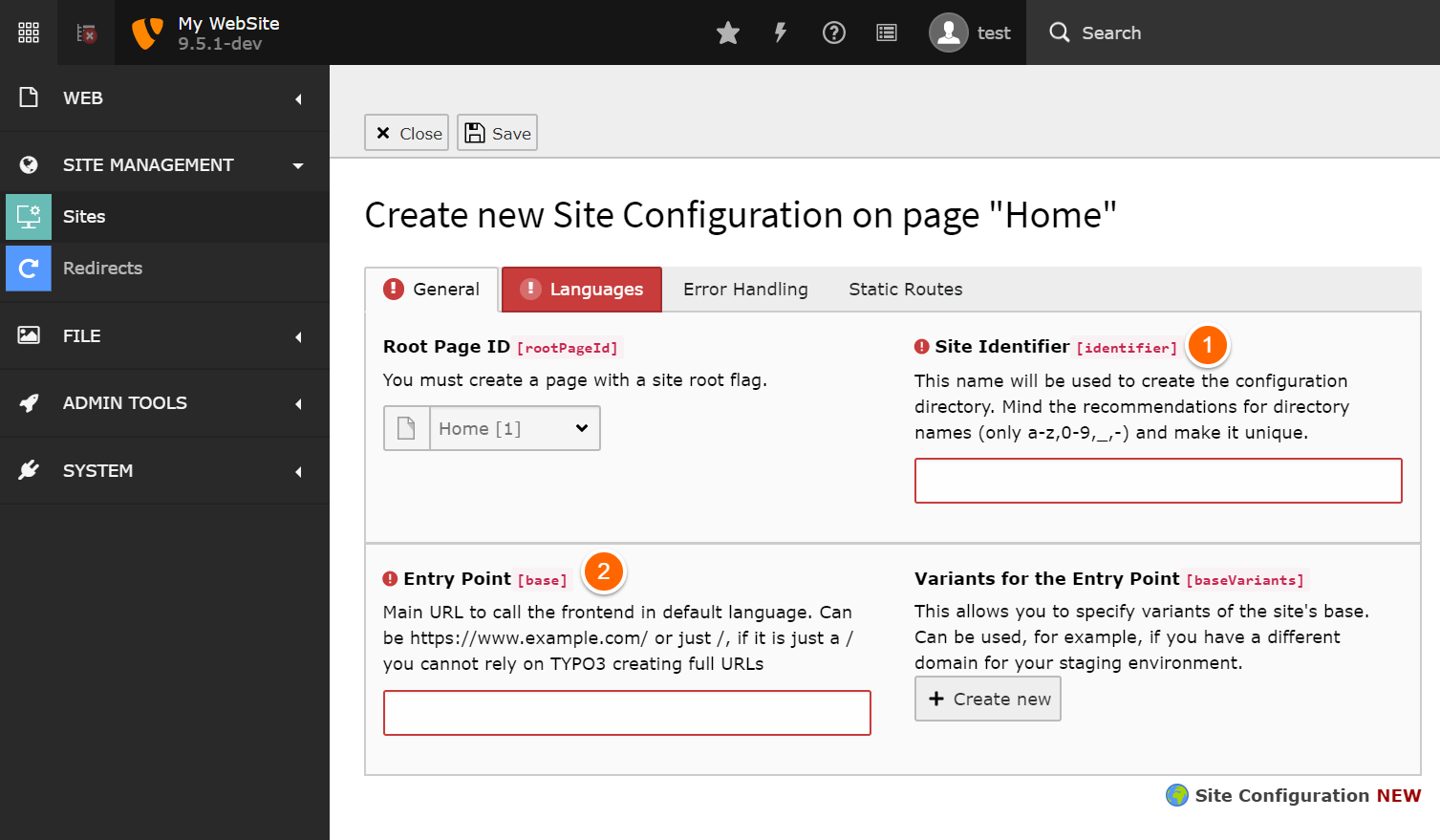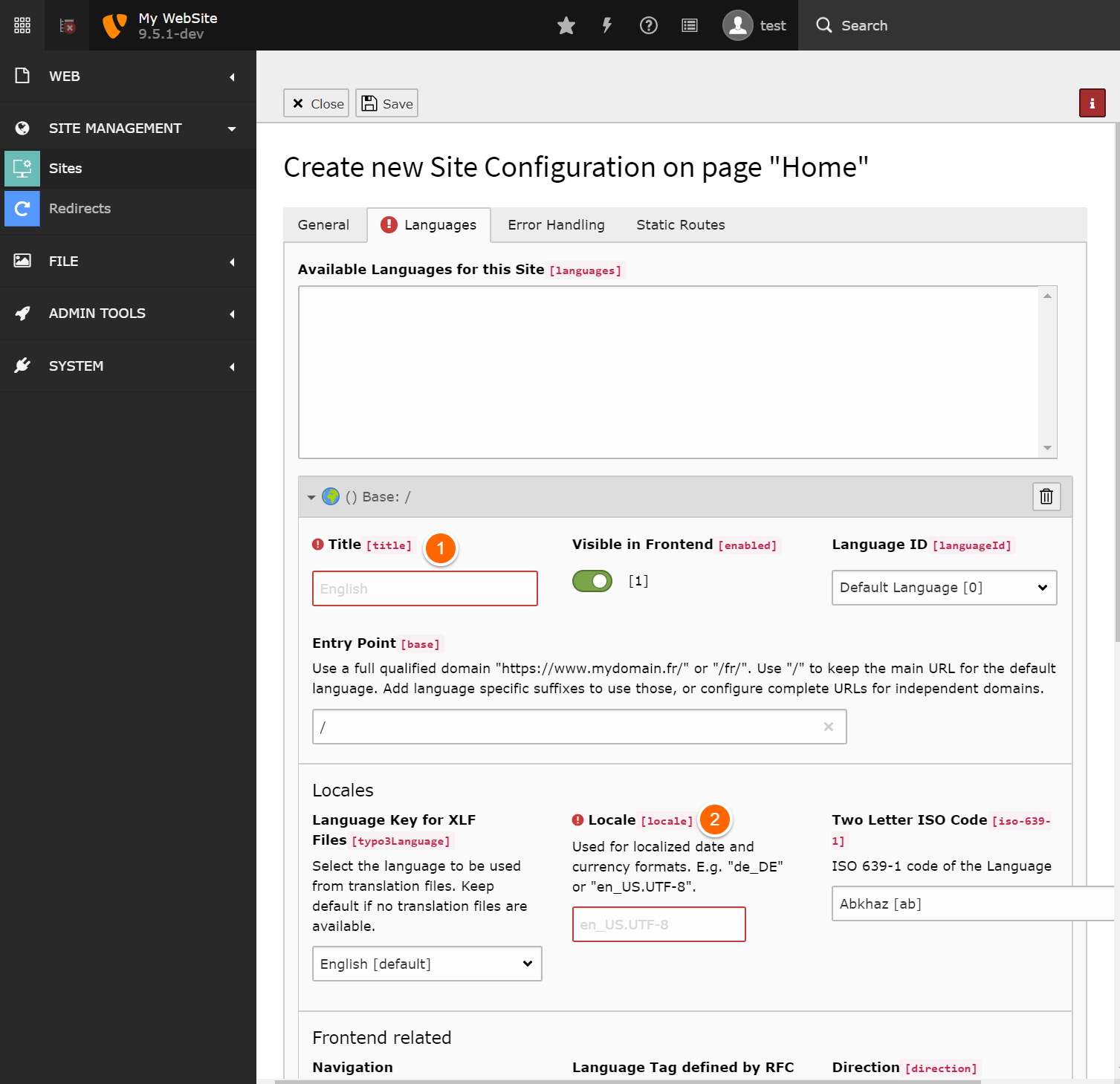Attention
TYPO3 v9 has reached its end-of-life September 30th, 2021 and is not maintained by the community anymore. Looking for a stable version? Use the version switch on the top left.
You can order Extended Long Term Support (ELTS) here: TYPO3 ELTS.
Creating a new Site¶
A new site can be created for every page record that either is on rootLevel (pid = 0) or has `is_siteroot` flag set. So at least one page is needed in the page tree.
To create a new site configuration, go to the Site module at Site Management.

The Site module without any configured sites in the TYPO3 backend.¶
After pressing the "big blue button" an edit form is displayed:

A new site creation form.¶
First, enter an identifier at (1).
Hint
The site identifier is the name of the folder within <project-root>/config/sites/ that will hold your
configuration file(s). When choosing an identifier make sure to stick to ASCII but you may also
use -, _ and . for convenience. Examples: main-site and langing-page.
Then, enter a base for your site at (2).
Tip
Be as specific as you can for your sites without losing flexibility. So, if you have a choice
between using https://example.org, example.org or /, then choose https://example.org.
This will make resolving pages more reliable as the chance for conflicts with other sites gets minimized.
On the next tab ("Languages") you are required to configure the default language settings for your site. These will determine the default behavior - setting direction and lang tags in frontend as well as locale settings.

Set default language settings¶
All you are required to set here is just the title (1) of the default language and the used locale (which should be available on the server)(2) - but you should also check and correct all other settings, as they will automatically be used for features like hreflang tags or displaying language flags in the backend.
That's all that is required for a new site.
Tip
Did you know that just by having a site configuration you get page based routing out of the box? Neat, isn't it?
Learn more about configuring languages, error handling and routing in the corresponding chapters.
